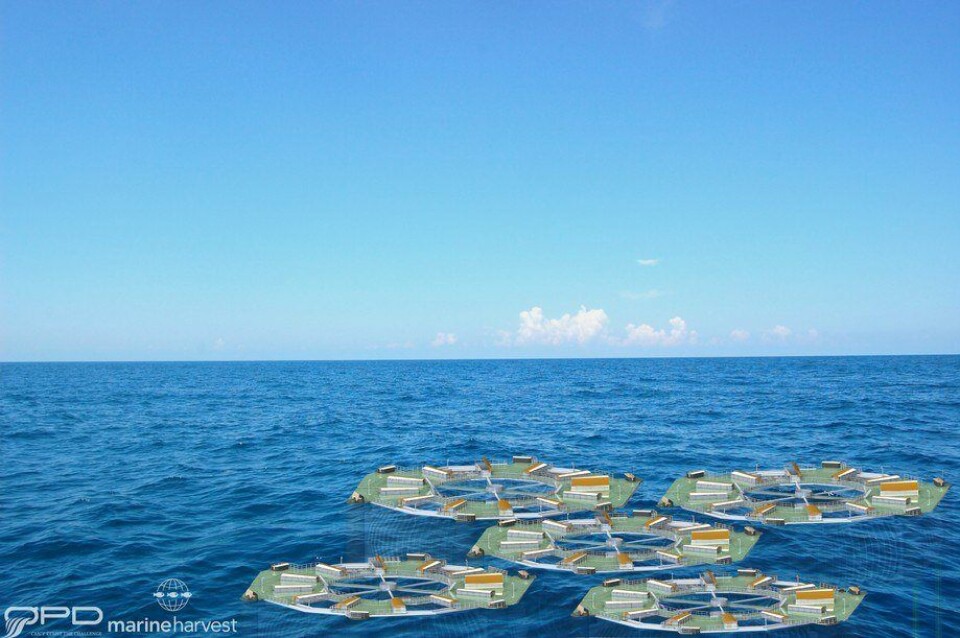
Ministry blows hole in Marine Donut plan
Norway’s Ministry of Food and Fisheries has rejected Marine Harvest's appeal for more development permits for its ‘Marine Donut’ concept farms.
Marine Harvest had applied for eight development licenses for ‘Marine Donuts’ on April 15, 2016. Norway’s Directorate of Fisheries granted permission for 1,100 tonnes of biomass to be used to test if the technology worked, but concluded that there was no need to develop more than one ‘Donut’ device.
Marine Harvest appealed to the Ministry of Food and Fisheries, which has now rejected the complaint and upheld the Fisheries Directorate's decision.
The Ministry said it understood that illustrations and calculations of moorings in the application indicated that each ‘Donut’ should be moored with an independent system. It said that the intention to develop mooring solutions, based on this, did not require the allocation of more biomass. It had been proposed by Marine Harvest that the ‘Donuts’ could take 200,000 fish in each unit.
A spokesman for the Directorate said: "The concept itself is a closed, floating plant with a donut shape and it is obvious that the plant must have solutions for the aforementioned functions regardless of how many units are being developed. However, the Directorate of Fisheries does not find that to develop these solutions indicates that biomass can be allocated for testing more than one ‘Donut’."
The Ministry agreed with this statement and reject Marine Harvest’s appeal.
Closed loop
Marine Harvest has previously said that the ‘Marine Donut’ is based on a new type of closed-loop technology intended to produce fish from three kilograms to slaughter size.
"This is brand new and very exciting technology,” CEO Alf-Helge Aarskog, previously stated. “With this concept, Marine Harvest shows that we really want to develop the way we produce salmon. Our goal is to make healthy and tasty food in an even more sustainable and cost-effective way.”






















































